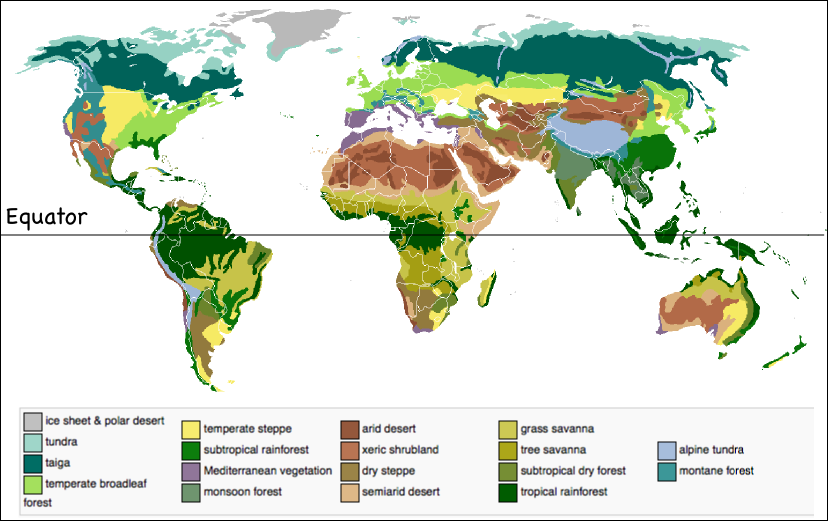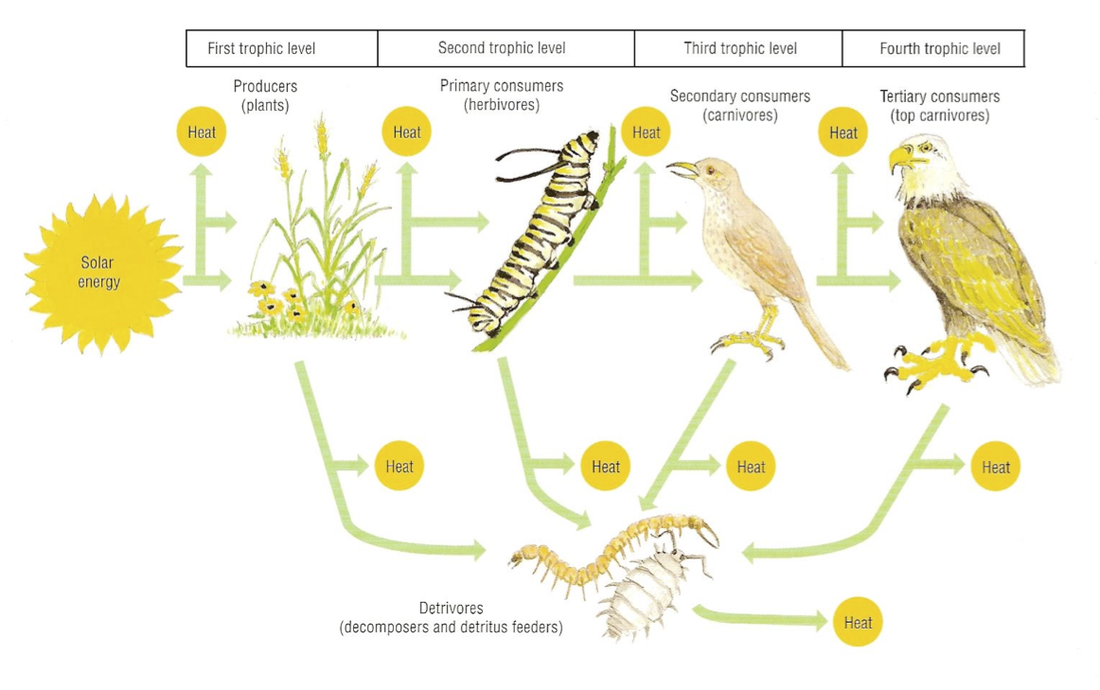The Biophysical Interaction Model
Ecosystems can be thought of as a set of interactions between the biotic and abiotic features. The biophysical Interaction model uses the interactions between the Atmosphere, Lithosphere, Hydrosphere and Biosphere to describe as ecosystem. When an ecosystem is described in this way, then an alteration (either human or natural) will alter the ecosystem. For example, if the amount of precipitation were increased due to climate change, then there may be more erosion of top soil leading to reduced fertility and an altered biosphere (Queensland Government, 2015).
The variations in sunlight and heat, available water and available nutrients determine how quickly an ecosystem can grow which in turn affects how lush or dense an ecosystem's vegetation appears. The variations in these factors alter from location to location changing the abiotic character and producing different ecosystems. For this reason, the same biome may produce quite different ecosystems at two different locations.
Insolation, altitude, aspect, parent material, ocean and atmospheric circulation patters are all highly variable and have significant impacts on the biophysical environment.
The variations in sunlight and heat, available water and available nutrients determine how quickly an ecosystem can grow which in turn affects how lush or dense an ecosystem's vegetation appears. The variations in these factors alter from location to location changing the abiotic character and producing different ecosystems. For this reason, the same biome may produce quite different ecosystems at two different locations.
Insolation, altitude, aspect, parent material, ocean and atmospheric circulation patters are all highly variable and have significant impacts on the biophysical environment.
Energy Cycling and Food Chains
|
All ecosystems cycle nutrient and energy through their food chains. For nearly all ecosystems, energy is taken from the sun and converted to sugars and proteins by autotrophs (producers). These sugars and proteins are eaten by heterotrophs (consumers). When plants and animals die they are broken down by decomposers. Energy is lost as heath, movement and waste at each trophic level and so there is less biomass at each higher level. This is why there are fewer apex predators, such as lions than secondary consumers, such as zebras.
The removal of a species or trophic level can cause disruption in ecosystems, sometimes referred to as a trophic cascade. The best example of this has been the removal and reintroduction of wolves in Yellowstone National Park. |
|
Nutrient Cycling
Just as energy flows through an ecosystem, various nutrients also flow through ecosystems. These are known as nutrient cycles. Water, Carbon, Nitrogen and Phosphorous all form nutrient cycles with sources and sinks. Most ecosystems are also limited in their growth by the abundance of one or more of these nutrients.
Conversely however, the addition of these nutrients into ecosystems in the form of fertiliser, sewerage or other pollutants can have a highly detrimental effect. Algal blooms often result from excess nutrients as it is able to quickly multiply to take advantage of the change in abiotic conditions. This rapid algal growth will result in eutrophication and deoxygenation if enough polluting nutrient is added.
Conversely however, the addition of these nutrients into ecosystems in the form of fertiliser, sewerage or other pollutants can have a highly detrimental effect. Algal blooms often result from excess nutrients as it is able to quickly multiply to take advantage of the change in abiotic conditions. This rapid algal growth will result in eutrophication and deoxygenation if enough polluting nutrient is added.

